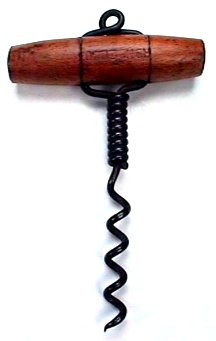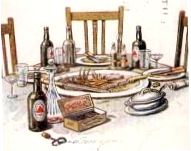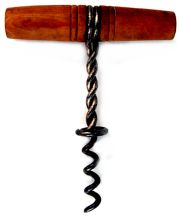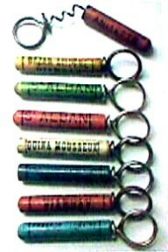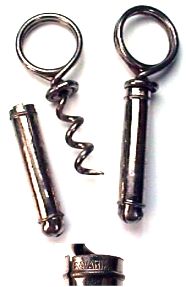|
Even Jacques Pérille, Paris
must have been influenced by the simple Clough wire medicine corkscrew with
this wonderful twin wire helix example illustrated in a JP catalogue.
|
A typical French colourful turned
wood handle, with the twisted shaft affixed with a short transverse handle pin,
not marked. |
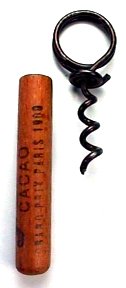
A rather poorly fabricated Clough
finger corkscrew based on his 1890/1900 patent, but with a square cut off
button, definitely not made by a Clough machine. The wood sheath advertises a
Swiss chocolate firm Suchard CACO CHOCOLAT GRAND PRIX PARIS 1900. Clough
exhibited and won awards for his corkscrew manufacturing machine at the Paris
Exposition of 1900. A wonderful 1900 patent corkscrew marked "Souvenir de L.
Exposition, Paris 1900, Section Americaine, Salle Des Machines, Rockwell,
Clough Co. Alton, New Hampshire, U.S.A. Machines, Automatiques, Brevetees,
Breve! recently surfaced on Ebay. |

